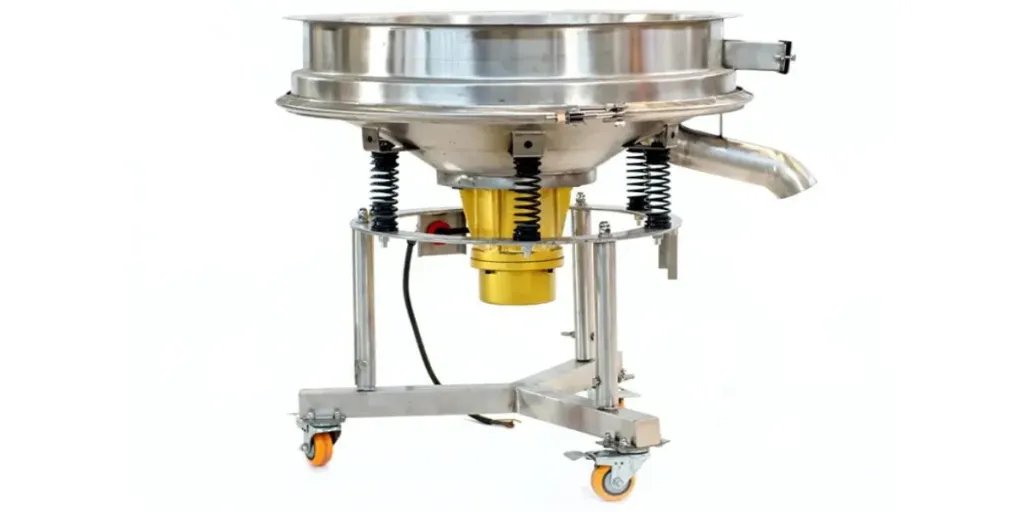Vibro sifters have revolutionized how things are done when separating particles and handling materials, leaving traditional methods in the dust. These machines offer many advantages, including better efficiency, more precise separations, less downtime, and easier maintenance. The real trick, though, is finding the right vibro sifters with so many options out there.
This guide dives into everything you need to know to pick out the perfect vibro sifter. It will also give insight into the market share of the vibro sifters and the different types of these machines available.
Table of Contents
Market share of vibro sifter
Types of vibro sifters
How to buy the perfect vibro sifter
Summary
Market share of vibro sifter
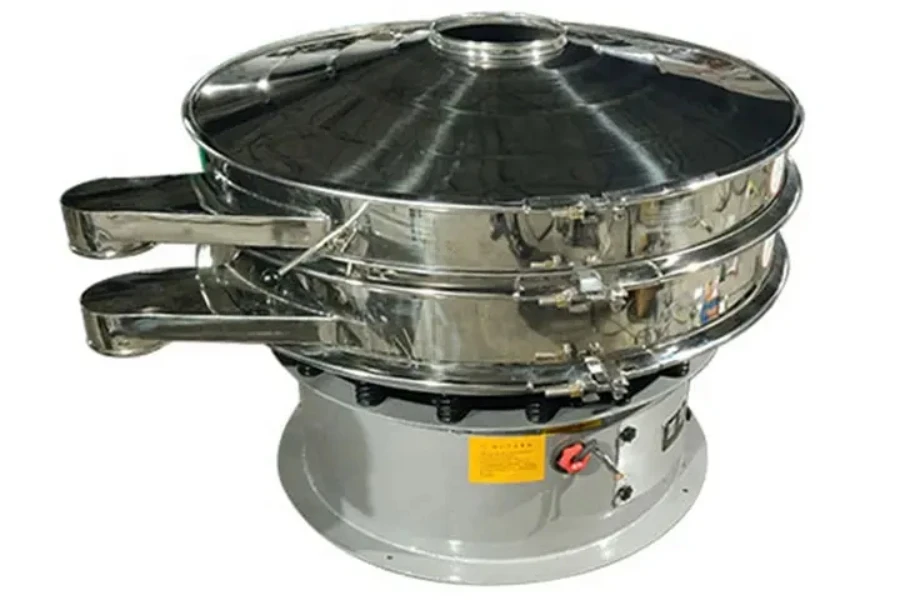
The market for vibro sifters has seen remarkable growth, fueled by several factors driving their adoption across diverse industries. According to Data Intelo, the global vibro sifter market is expected to grow at a CAGR of 5.5% from 2020 to 2030. Their ability to provide efficient particle separation, better throughput, and enhanced product quality compared to traditional methods has spurred demand, particularly in sectors like pharmaceuticals, food, and chemicals, aiming to meet stringent standards.
High-demand pockets reside in North America, Europe, and Asia-Pacific, where established industrial sectors and burgeoning industries, especially in China and India, underscore the importance of vibro sifters in modern production processes.
Types of vibro sifters
1. Circular vibro sifter
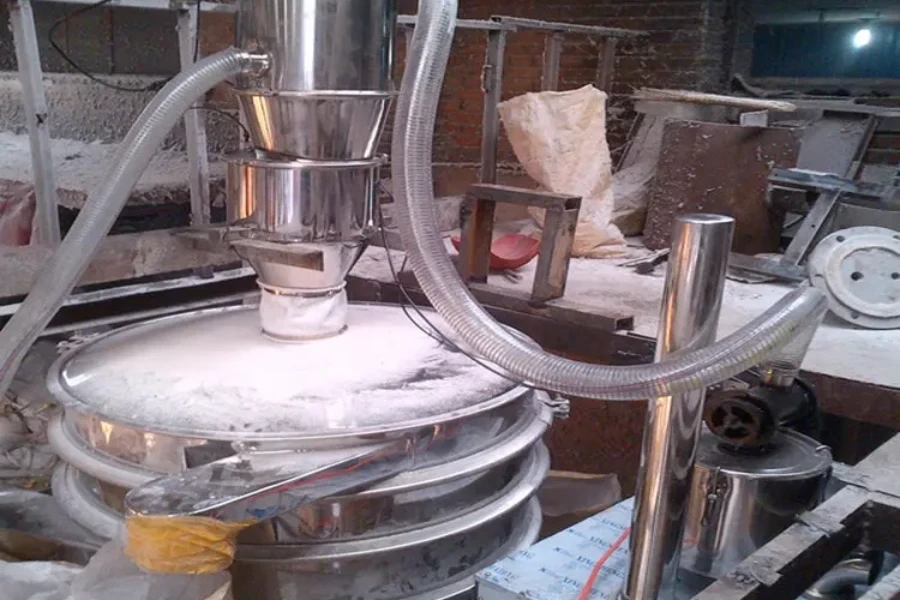
The circular vibro sifter, sometimes called a round separator, works using a circular motion to help sort particles effectively. It has multiple layers of screens with different mesh sizes, all stacked on one another. When materials are put onto the center of the screen, the circular movement makes it spread outwards, which helps split up the particles based on their sizes. These circular vibro sifters are super useful in industries where having consistent and precise particle sizes matters, like in food, pharmaceuticals, and the chemical industry.
These sifters typically handle a capacity of 100 to 2000 kg/hour, depending on the model. In terms of price, entry-level models start at around USD 2,000, while high-capacity units with advanced features can cost upwards of USD 10,000.
Pros
– Ideal for consistent and precise particle sizes
– Simple operation without advanced technology
– Lower initial setup costs compared to some other types
Cons
– Less efficient due to the circular motion
– Limited capacity for handling bulk materials
– Not suitable for heavy-duty tasks
2. Rectangular vibro sifter
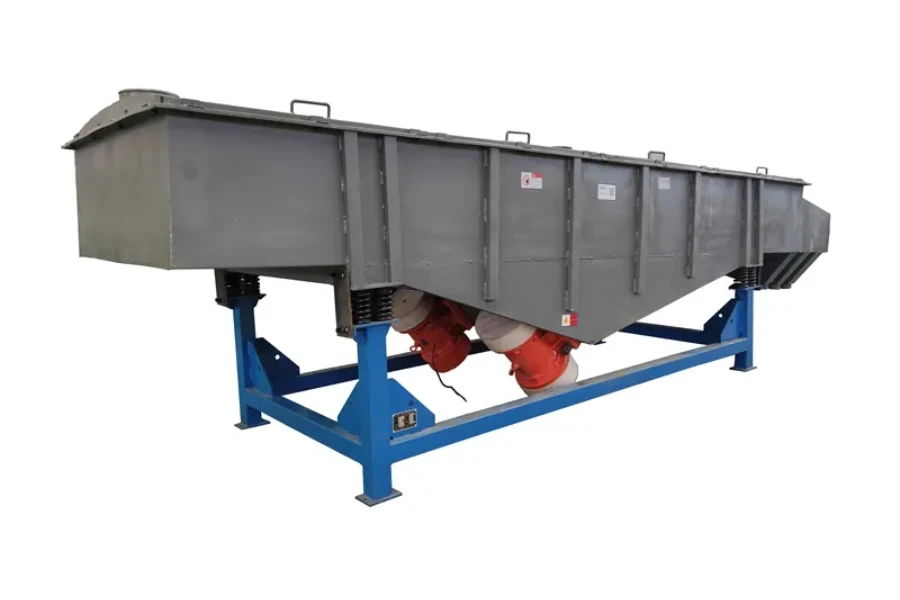
Unlike the circular motion, the rectangular vibro sifter uses a back-and-forth vibration pattern that goes in a straight line. This setup is good for dealing with larger amounts of stuff and materials in bulk. These rectangular sifters usually have multiple layers arranged side by side, like a stack of cards, which lets them do a great job separating particles over a bigger screening space.
Since they are built tough and can handle more, they are a good fit for industries that handle a lot of stuff at once, like working with bulk materials, aggregates, and heavy-duty tasks.
They typically handle larger capacities, ranging from 500 to 5000 kg/hour, depending on the model. Prices for rectangular sifters can start at around USD 5,000 for basic models and go up to USD 15,000 or more for high-capacity units with advanced features.
Pros
– High capacity for heavy-duty tasks and bulk materials
– Efficient bulk material separation
– Built tough for durability
Cons
– Less precise in particle separation compared to circular sifters
– Higher initial investment
– Not as suitable for precision applications
3. Gyratory vibro sifter
The gyratory vibro sifter, also called a gyratory separator, brings together a mix of gyratory (kind of circular) and back-and-forth movements to nail down getting particle sizes just right. It is a top choice when you must be spot-on with separating and categorizing materials.
These gyratory sifters usually have a more complicated mechanical setup than circular and rectangular ones. That is why they shine in industries like pharmaceuticals, chemicals, and mineral processing, where getting things precise and keeping a close watch on quality are super important.
Gyratory sifters range in capacity from 100 to 3000 kg/hour. These sifters have more complex mechanical setups, and prices generally start at around USD 4,000, with high-capacity models costing over USD 20,000.
Pros
– Precision in particle separation
– Ideal for applications where quality control is crucial
– Handles a moderate capacity efficiently
Cons
– Higher initial cost due to complex mechanical setup
– Requires maintenance expertise
– Unsuitable for very high-capacity tasks
How to buy the perfect vibro sifter
1. Mesh size and type
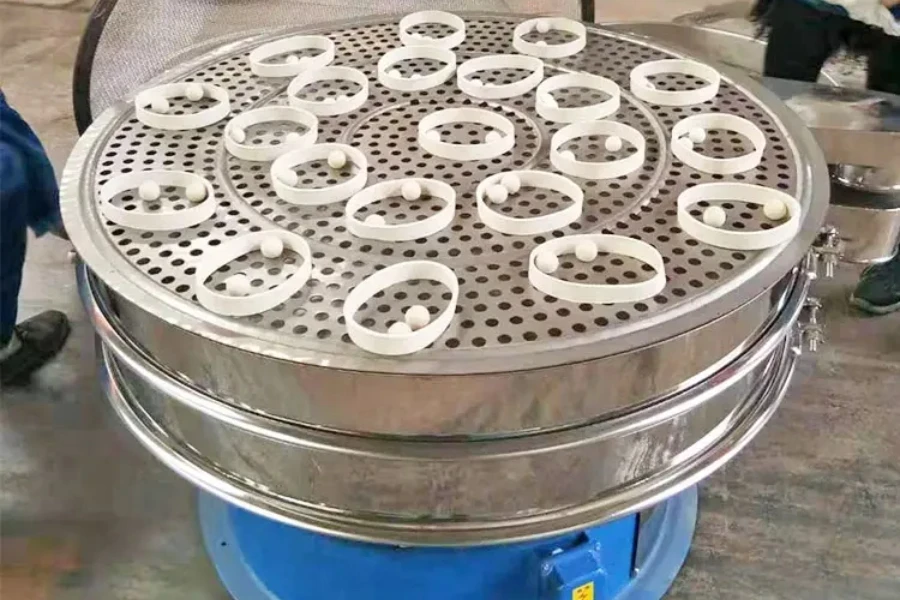
The size of those little holes in the mesh screens matters when sifting powder, little chunks, or bigger bits. For super fine powder, those holes have to be tiny; bigger holes are needed when dealing with bulkier things. These screens come in various mesh sizes, like having different filters with different-sized holes.
Circular vibro sifters usually rock mesh sizes between 20mm and 200mm, making them perfect for sifting flour, sugar, and powders. Rectangular vibro sifters have mesh sizes from 10mm to 100mm; they are great for handling grains, granules, and even some pellets. For the precision game, the gyratory vibro sifter steps in with mesh sizes ranging from 2mm to 100mm. They are tailor-made for those meticulous pharmaceuticals, chemicals, and minerals tasks.
2. Cost
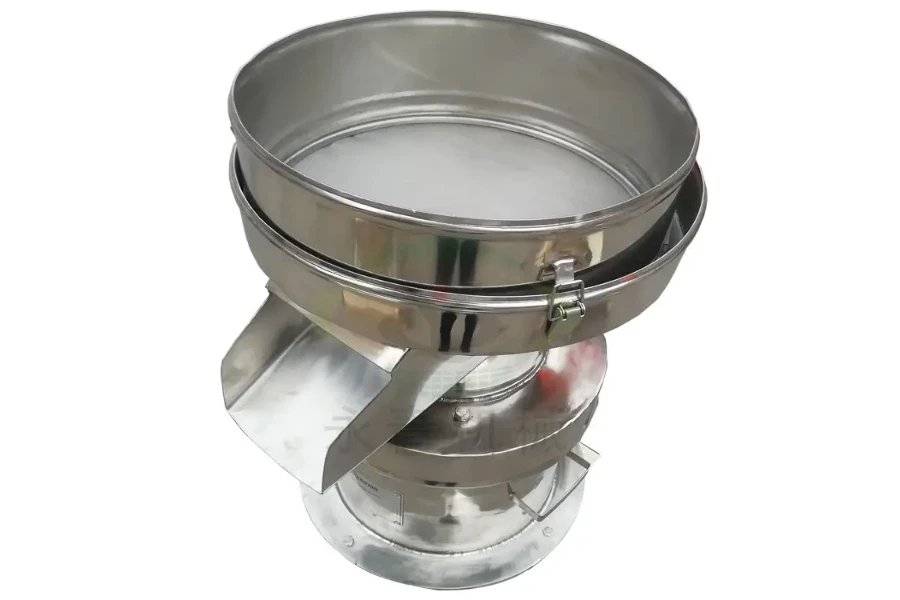
A comprehensive cost evaluation involves considering both direct and indirect financial implications over the entire lifespan of the equipment. Moreover, this assessment often involves a broader perspective, considering the value gained from the investment, the potential return on investment, and the overall impact on budgeting and financial planning.
A basic circular vibro sifter might set you back around USD 5,000. For something more heavy-duty, like a rectangular sifter, you are looking at a range between USD 8,000 to USD 20,000. If you are eyeing a high-precision gyratory sifter, those can start around USD 15,000 and go up to USD 30,000 or more, depending on the specs.
3. Capacity
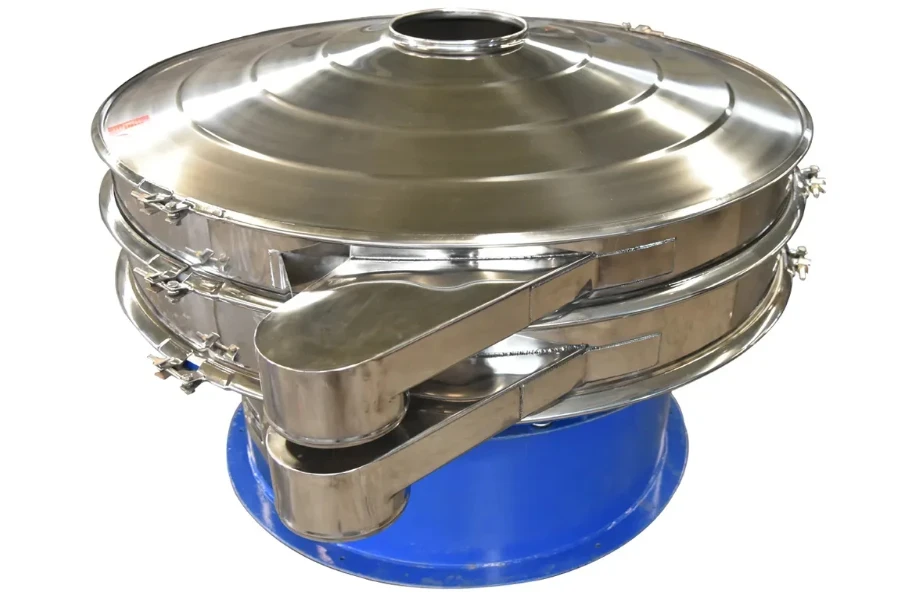
It pertains to the vibro sifter’s capability to efficiently process and handle a specific volume of material within a given timeframe. This assessment involves aligning the sifter’s throughput rate with the production requirements to prevent operational bottlenecks or underutilization of the equipment.
For circular vibro sifters, think around 100 to 3000 kilograms per hour—great for moderate-sized operations. Moving to rectangular vibro sifters, they can handle more, usually from 500 to 8000 kilograms per hour—perfect for bigger tasks. And then there is the gyratory vibro sifter, built for precision, handling around 100 to 6000 kilograms per hour—a solid choice for meticulous jobs.
4. Compatibility
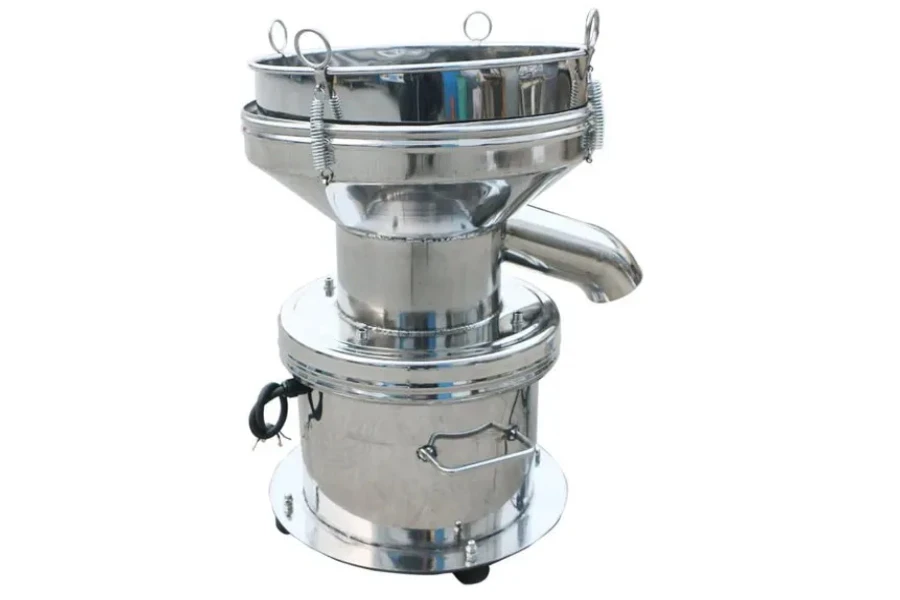
Compatibility involves evaluating whether the vibro sifter fits the existing production setup, considering material properties, production capacity, operational environment, infrastructure, and maintenance feasibility. Ensuring that the sifter aligns with these dimensions is crucial for optimal performance, minimizing downtime, and making a well-informed investment decision.
5. Motor power
When it comes to materials, a too-powerful motor might rough them up, while a weak one could slow things down. Match the vibro sifter motor’s power with how much sifting will be done.
Circular vibro sifters have around 0.25 to 2 horsepower, perfect for those moderate tasks. Rectangular vibro sifter has between 0.5 to 3 horsepower, perfect for handling bigger loads. Gyratory vibro sifters have about 0.75 to 5 horsepower, which is great for those meticulous jobs. Some vibro sifters come with variable speed controls, like cruise control for sifting so that users can fine-tune the intensity.
6. Construction material

When dealing with more corrosive substances, opting for vibro sifters built with stainless steel that can withstand high temperatures is the way to go. Similarly, if the materials are abrasive, selecting a construction that can handle the roughness is essential. The sturdiness of the vibro sifter directly impacts its lifespan and maintenance requirements, illustrating the balance between longevity and care needed.
Summary
Finding the right vibro sifter in material processing is key to boosting efficiency, precision, and product quality. Crafting this ideal solution involves careful consideration of several vital aspects. Every detail matters, from matching mesh sizes to materials, ensuring compatibility with your workflow, and selecting the motor power that suits your needs. To explore a wide range of vibro sifters that fit the bill, check out Alibaba.com, where many sifting solutions await.
